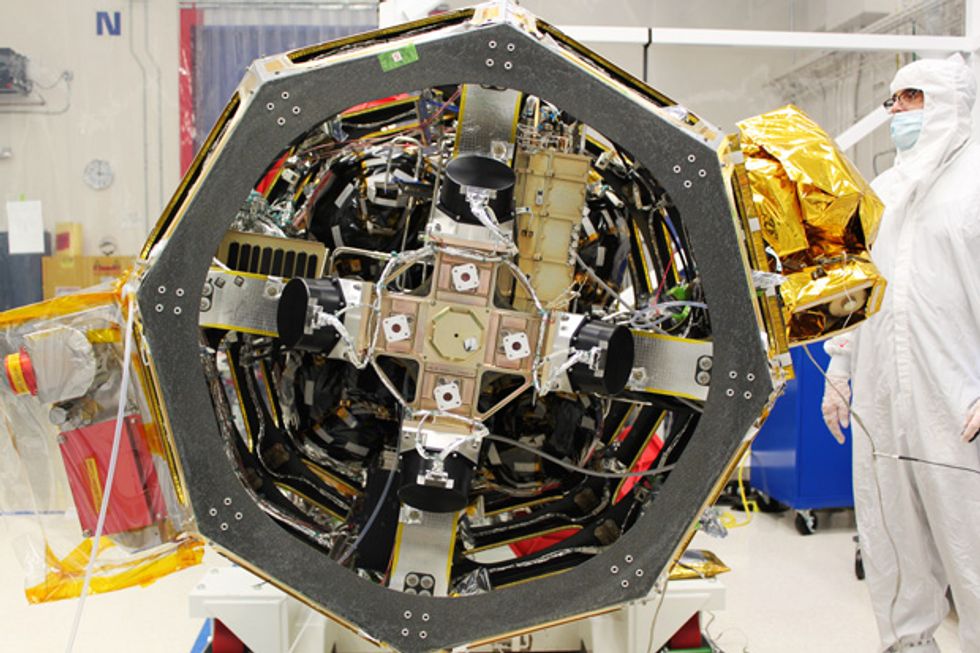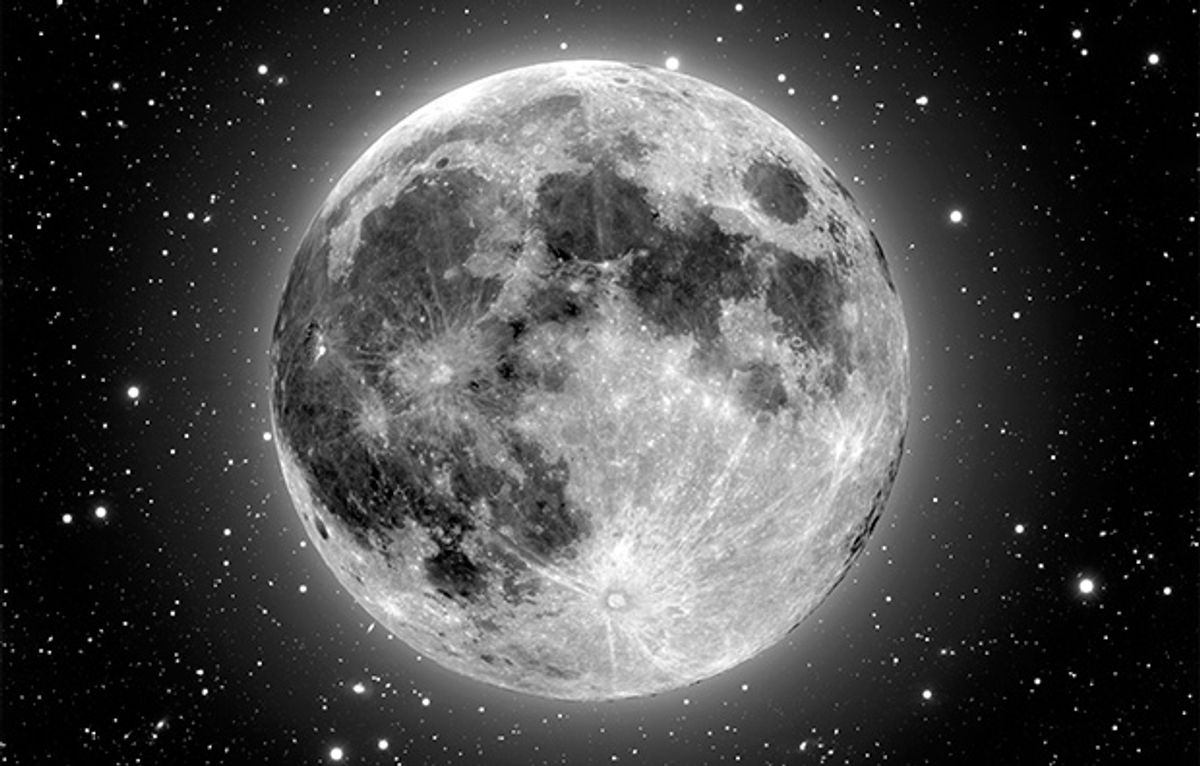Last March, a laser-ranging system on the United States’ East Coast beamed a tiny image of the Mona Lisa to NASA’s Lunar Reconnaissance Orbiter. The transmission, which reached the spacecraft while it was in orbit around the moon, was just a trickle of data by Earth standards, topping out at 300 bits per second.
Soon, that modest demonstration could be trumped by a much faster, two-way link. On 6 September, the Lunar Laser Communication Demonstration (LLCD) is set to launch to the moon. Once in orbit, it is expected to be able to receive data from Earth via laser at a rate of 20 megabits per second and send data back at up to 620 Mb/s. If all goes well, researchers say, the experiment could someday enable spacecraft to send high-definition video from other planets and allow high-bandwidth communication with astronauts who venture beyond the moon.
Over the years, a number of Earth-orbiters have tested laser links with the ground and between spacecraft, and a few proof-of-principle laser pings have been sent to a spacecraft en route to Jupiter and exchanged with another headed to Mercury. But LLCD, which will orbit a good 10 times as far from Earth as geosynchronous satellites, “will be the longest laser communications link ever attempted,” says Don Boroson, who led the design team for the instrument at MIT’s Lincoln Laboratory. LLCD will attempt to receive data using an onboard 10-centimeter telescope and transmit it back with a half-watt laser.
The lunar component of the US $60 million experiment has been installed on NASA’s Lunar Atmosphere and Dust Environment Explorer (LADEE) mission, a small orbiter that will study the thin lunar atmosphere. LLCD will boot up once the orbiter reaches the moon and will have a month to demonstrate communications during the orbiter’s initial checkout period.

Boroson hopes that this will be enough time to prove the technology’s utility to mission designers planning future spacecraft. Right now, all deep-space communication is done at radio frequencies, using antennas that may be bigger than the spacecraft themselves. But a laser-based system could be much smaller, and NASA estimates that it could be 10 to 100 times as fast. That’s largely because the shorter-wavelength, near-infrared light doesn’t spread out nearly as much as a radio wave does as it moves through space. A tighter beam translates to more power and higher transmission speeds. LADEE’s radio signals will encompass an area larger than Earth by the time they reach home, Boroson says, while LLCD’s laser beam will produce a spot just 6 kilometers across.
That creates some challenges when it comes to pointing. Minute vibrations from the reaction wheels that point the orbiter could easily knock LLCD’s telescope and beam off target. LLCD will counteract this problem by fine-tuning its own orientation, using an inertial sensor to keep track of movement. On Earth, sensitive and compact detectors, based on arrays of superconducting nanowires, will be used to pick up individual photons sent by LLCD, pinning their arrival times within a few tens of picoseconds.
“Laser communications are key to removing a communications bottleneck that limits the amount we can learn from our deployed space probes,” says Steve Hranilovic of McMaster University, in Hamilton, Ont., Canada, who works on free-space optical communications. “LLCD is a wonderful first step to demonstrating deep-space laser communications.”
Hranilovic notes that LLCD’s data is encoded only in brightness—in the presence or absence of light. But information can also be encoded in the phase or timing of a wave. Earth-orbiting missions such as Alphasat, operated by the European Space Agency (ESA), which launched in July, can transmit data using phase. This approach can lead to higher speeds, Boroson says, but it requires larger telescopes on Earth. It also presents an extra challenge for weaker signals sent to and from deep space, because phase information is difficult to recover after a beam has been distorted by atmospheric turbulence.
Weather in general is a limitation. Although optical signals can be received during the day, they can’t penetrate clouds. As a result, LLCD’s three receivers have all been installed in sunny settings: White Sands, near Las Cruces, N.M.; a mountain facility near Wrightwood, Calif., run by NASA’s Jet Propulsion Laboratory; and an ESA site on Tenerife, in the Canary Islands.
If one site is cloudy, another will likely have a view of the moon. More sites could be added to boost coverage. “We’re actually trying to slowly build ourselves a network infrastructure for optical communications,” says Don Cornwell, mission manager for LLCD at NASA’s Goddard Space Flight Center, in Greenbelt, Md.
Even so, future deep-space missions will likely carry some radio equipment to guarantee they can communicate with Earth. “We will see [lasers] more and more, but we’ll have a hybrid system,” says Manfred Wittig, a retired satellite communications project manager with ESA. “With radio, we can ensure there is always a link.”
A version of this article originally appeared in print as "Moonbeams by the Megabyte."
